Raquel Nelson’s story may be rare, but the dangerous conditions are not — show us
Many of you were shocked by the story of Raquel Nelson, the single mom in Atlanta charged with vehicular homicide when her son was killed while crossing an unsafe street with her. While shocking, head-scratching stories like hers are thankfully rare, it’s emblematic of the road design in many places that we live, and we want to make sure that Congress gets that picture loud and clear.
We want to show them that roads like Austell Road by Raquel Nelson’s apartment — 4 lane speedways with few considerations for pedestrians — are far too common.
So send us your photos of dangerous, unsafe and poorly planned streets out there across America.
We want to see what streets look like out there for people trying to walk. We want to see the missing crosswalks, the 1/2 mile treks to the nearest crosswalk along a 50 mph highway, and dangerous roads designed for speeding traffic rather than safe walking. More than 47,000 people were killed while walking from 2000-2009, and a large majority of them occurred on roads fitting these descriptions.
A few details about how to send in photos or video:
- Email: You can email photos to us at photos@t4america.org. When you send them, please let us know if we can upload these to our Flickr account (with your credit information in caption like this one.) Anywhere we use your photos, we’ll always give you credit.
- Flickr: Add photos to the T4 America Flickr group, and tag them with “dangerous by design” so we’re sure to see them. If you have photos but don’t want to add them to the group, you can just add the tag “dangerous by design”. We always prefer photos licensed with Creative Commons, so we can use these photos in meetings with Congress or on the blog with credit given to the source.
- Video: You can upload videos directly to our Facebook page, but Youtube or other video sharing sites are fine. Send us a link. If you send in videos directly to the email address, they need to be under 10 mb.
- If you’ve got another way to show us your photos other than these, drop us a line at photos@t4america.org
Over the next few weeks we’ll highlight some of the most heinous conditions and worst design here on the blog.
Poorly designed streets — often built or designed with federal dollars — endanger pedestrians, cyclists and drivers alike. Too many people are walking in these places where they’re likely to become the next statistic because of streets that are dangerous by design. Show Congress what this looks like and help us paint a compelling picture of why we need to invest in safer streets in the next transportation bill.
Your photos will help us in our meetings with Congress and other transportation officials as we press for policies and funding in a transportation bill that will help make walking and biking safer on streets around the country.
Here are some examples of the dangerous and inconvenient conditions pedestrians face in our cities and communities every day.
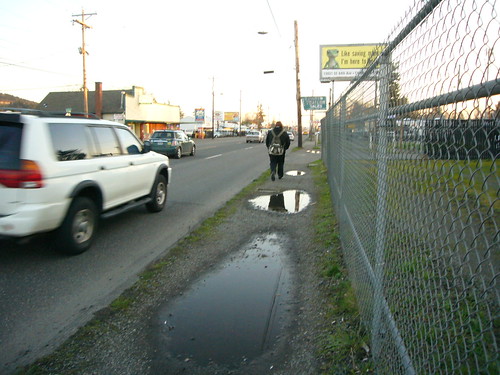 |
| Sidewalk Infill_ 82nd 022 Originally uploaded by Transportation for America to Flickr. |
| Credit to April Bertelsen Pedestrian Coordinator Portland Bureau of Transportation |
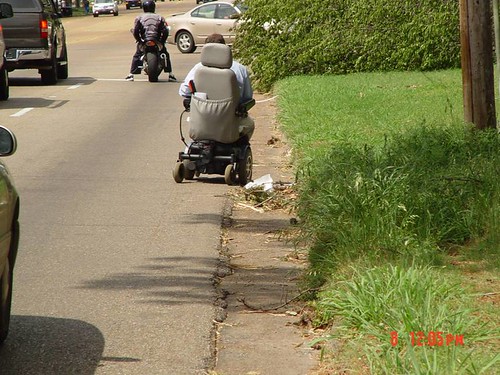 |
| image003 Originally uploaded by Transportation for America to Flickr. |
| (Please credit photos to Dr. Scott Crawford. Posted here with his permission) |
 |
| Walking & Roads Originally uploaded by Transportation for America to Flickr. |
| Credit to Stephen Lee Davis/Transportation for America |
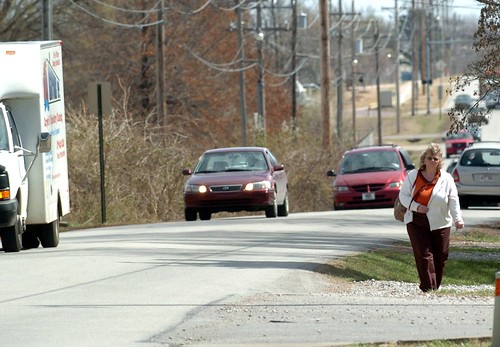 |
| Walking in the ditch Originally uploaded by Transportation for America to Flickr. |
| Photograph by Stephen Lee Davis/Transportation for America. |






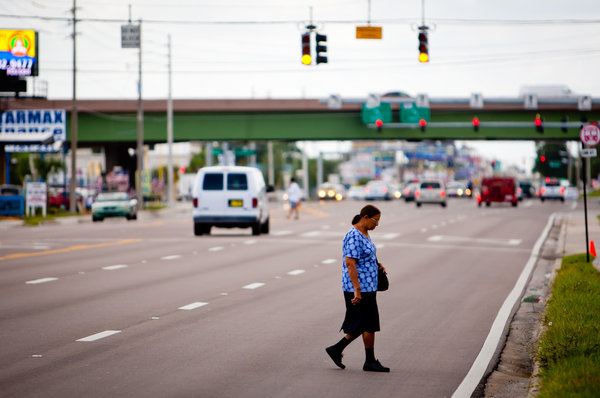
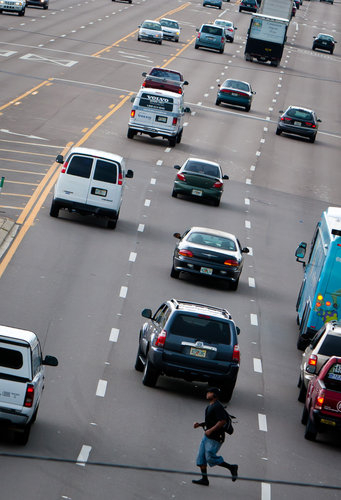















Pingback: Transportation For America » Governor Cuomo signs Complete Streets legislation as New York Times surveys pedestrian safety in Orlando
Pingback: Streetsblog.net » T4A Building Album of USA’s Most Dangerous Streets, Needs Your Photos!
Pingback: tribe.net: t4america.org
Pingback: Transportation For America » Photos of dangerous streets have been streaming in